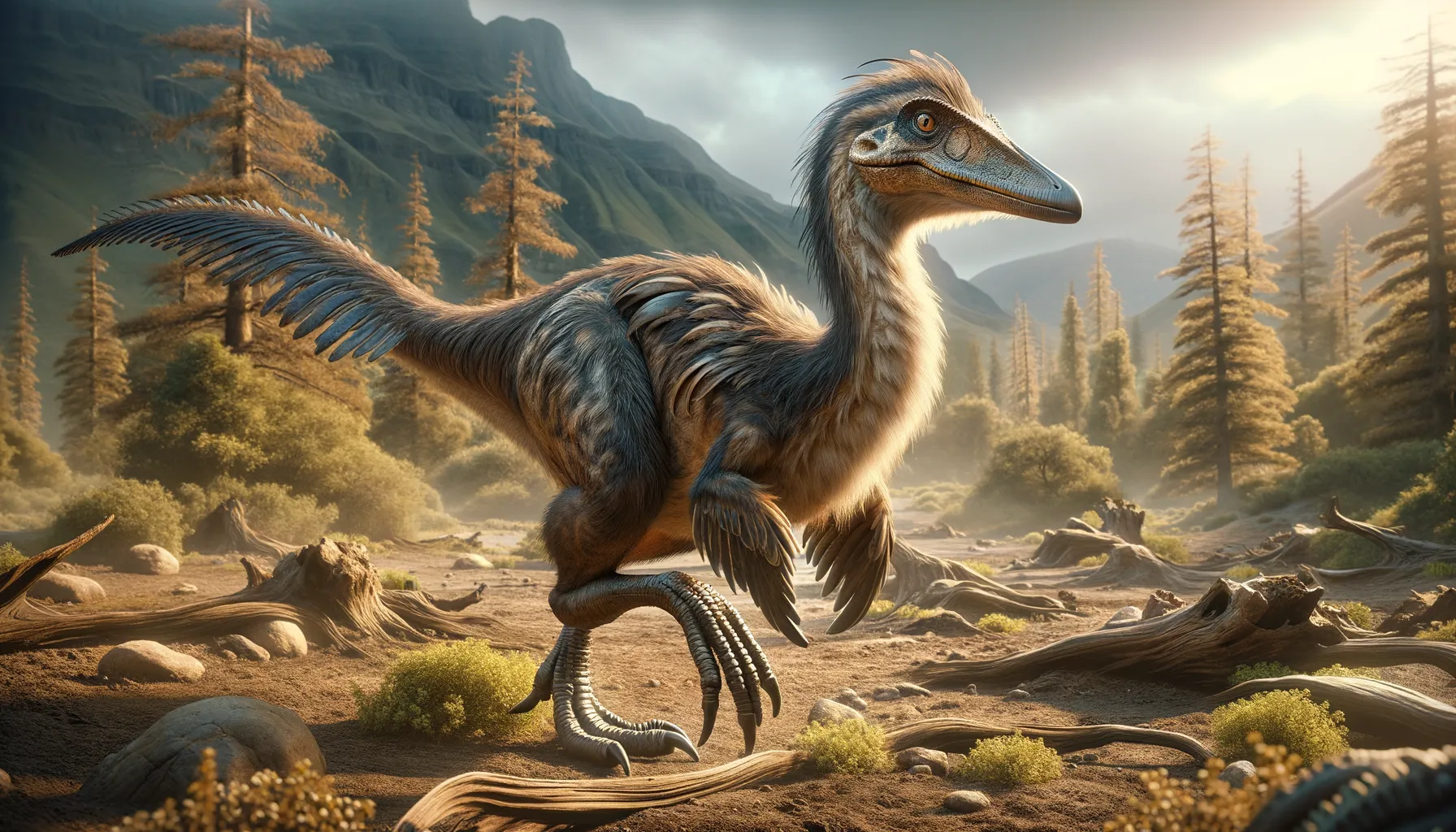
Epichirostenotes
Swift and nimble, a Cretaceous sprinter!
Period
triassic
Length
Roughly 3 meters in length.
Height
Around 2 meters tall.
Weight
Approximately 100 to 150 kilograms.
Epichirostenotes was a bird-like dinosaur known for its nimbleness and distinct anatomy. This theropod roamed what is now North America during the late Cretaceous period. Its ostrich-like build suggests it was a fast runner, likely helping it to evade larger predators. With a beak and clawed hands, Epichirostenotes was uniquely adapted to its environment, feeding on plants, smaller animals, and possibly insects.
Diet
Epichirostenotes was omnivorous. Its diet likely included fruits, seeds, and small animals. It may have supplemented its diet with insects and other small invertebrates.
Hunting
This dinosaur probably foraged for food, using its keen sense of sight. Its agile nature allowed it to catch small animals swiftly. It might have used its beak to pluck vegetation and small prey.
Environmental challenges
Epichirostenotes lived during a time of environmental change. Fluctuating climates and shifting landscapes were constant hurdles. It needed to adapt to diverse terrains, from lush forests to arid plains. Predation by larger theropods presented substantial survival challenges.
Speed
Relatively fast for its size, agile.
Lifespan
Estimated around 20 to 30 years.
First discovery
Discovered in Dinosaur Park Formation in Alberta.
Fun Facts
- Epichirostenotes was a bird-like dinosaur that lived approximately 75 million years ago during the Late Cretaceous period.
- This dinosaur belonged to a group known as theropods, which also includes the famous Tyrannosaurus rex and modern birds.
- Epichirostenotes is known for its distinct hands, which were quite dexterous, possibly allowing it to grasp and manipulate objects.
- The name 'Epichirostenotes' means 'close-handed' in reference to its unique hand structure.
- Fossils of Epichirostenotes have been found in Alberta, Canada, providing important clues about its lifestyle and environment.
- Epichirostenotes was a relatively small dinosaur, estimated to have been around 2 meters (6.5 feet) in length.
- Scientists believe that it may have been an omnivore, feeding on a diet of plants, small animals, and insects.
Growth and Development
Growth in Epichirostenotes likely occurred rapidly during early life stages. Juveniles were possibly independent soon after birth. As they matured, limb strength and agility developed, enhancing survival skills. The development of feathers may have played a role in temperature regulation and display.
Habitat
Epichirostenotes inhabited mixed environments like open woodlands and river valleys. These areas provided ample food and cover against predators. Seasonal changes would have affected food availability, facilitating migration. Its habitat also supported diverse dinosaur communities.
Interaction with other species
Epichirostenotes coexisted with other dinosaur species, including herbivores and carnivores. Its interactions were likely shaped by competition for food resources. It might have exhibited aggressive behavior to defend feeding grounds. Cooperative relationships, such as following herbivores for foraging, may have occurred.
Natural lifespan
Its natural lifespan was approximately 20 to 30 years.
Reproduction
Epichirostenotes likely laid eggs in nests, as other theropods did. Parental care, such as guarding the nest, might have been practiced. Nesting sites would have been carefully selected for safety. Seasonal breeding may have aligned with periods of food abundance.
Social behaviour
Interactions among Epichirostenotes could have ranged from solitary to small group dynamics. Social behavior might have included mutual grooming or communal nesting. Vocalizations or displays may have played a role in communication. Territorial disputes would have been common in high-density areas.
Fossil locations
Fossils of Epichirostenotes have been primarily found in Alberta, Canada. Most remains come from the Dinosaur Park Formation. Additional specimens have been uncovered in similar sedimentary deposits. These discoveries have enriched our understanding of its ecology and behavior.
